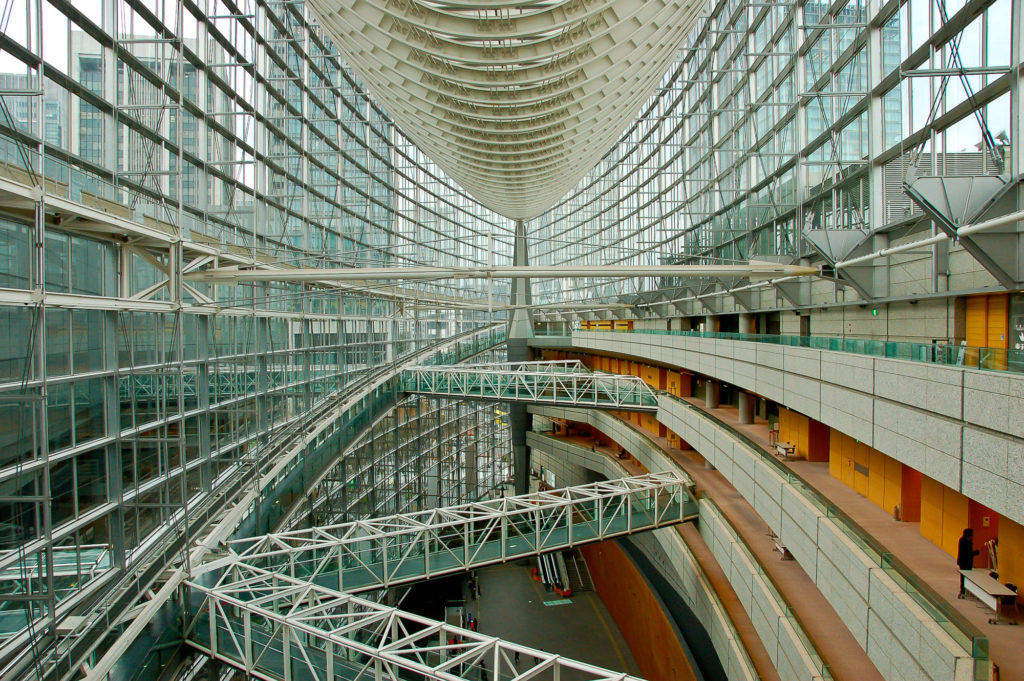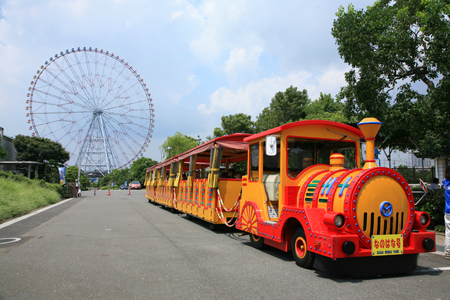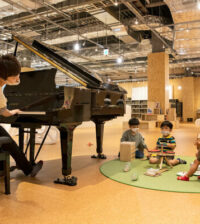- Belgium comes to Yamashita Park
- Residential Villa in Phuket Entices Remote Workers With Long-Stay Rates
- Rare pieces of French glass art at the Mirai Museum of Art
- Feast on fresh fish and seafood at the 2024 ‘Sakana’ Festival
- Would you like to ride in a Louis Vuitton gondola lift?
- Naked Snow Aquarium
- Festive lights at Yomiuriland will get you feeling the holiday vibes
Our Family Routine: Exploring Japanese Architecture
My husband, an architectural researcher in Tokyo, feels like a kid in a candy store. His incessant need to explore the city became a big part of what we did as a family. I didn’t realize how much time we spent visiting unusual structures until I asked our children what they would like to do for the weekend, and their answer was a list of buildings they wanted to revisit.
I love how innovative Japanese architecture has influenced our kids. They now expect buildings to generate their own power, incorporate interesting materials, filter light in sophisticated ways, employ experimental forms, or at the very least make you say “Wow!”
Here are a few of our favorite buildings, which may be enjoyed by both children and adults alike.
 Tokyo International Forum
Tokyo International Forum
Located near Tokyo Station, the Tokyo International Forum is like an elaborate science-fiction fantasy brought to life. My husband likes to say that even George Lucas could not have dreamed up a more awe-inspiring space.
Designed by New York-based architect Rafael Viñoly, the Tokyo Forum consists of a collection of exhibition halls, theaters, conference spaces, and retail shops, the centerpiece of which is a voluminous, lozenge-shaped hall encircled by spiraling ramps and traversed by several free-spanning pedestrian bridges. The innovative roof structure that allows such a large and nearly column-free space hovers above the void like a suspended ship’s hull or whale’s ribcage. This surprising shift in scale and the tangible perception of accessibility imbue a sense of excitement and freedom in children. In fact, this hall was our eight-year-old’s favorite place in Tokyo, and he wanted to see it nearly every weekend. Upon each visit, our kids would run up the ramps all the way to the top floor of the building, energized by the kind of empowering sense of freedom normally limited to parks or playgrounds.
The Tokyo International Forum is compelling by day, when sunlight floods the 60-meter-high glass-clad space, as well as by night, when the building and exterior walkways glow from within. The atrium and an adjacent complex of buildings flank a spacious plaza filled with beautiful shade trees and sculptures. The Rice Museum on site is also a great venue to learn more about the national staple.
Bloomberg ICE
A trip to the Tokyo Forum may easily be combined with a visit to the Bloomberg ICE (Interactive Communication Experience) installation. Located in the ground floor of the Marunouchi Building, Bloomberg ICE is an interactive digital display designed by Tokyo-based Klein-Dytham Architects and artist Toshio Iwai. Commissioned by the Bloomberg financial company, Bloomberg ICE provides an entertaining platform for children and their kid-at-heart parents to play games or make music by touching a large LED screen suspended above a glowing tile floor. Interactive programs include the computer-generated painting and music features entitled Digital Shadow, Digital Harp, and Digital Wave. Our children’s favorite, however, was Digital Volleyball, a game that simulates a lively volleyball match in which participants attempt to keep a computer-generated ball afloat.

Kasai Rinkai Park
For a refreshing break from the urban congestion of Tokyo, you can visit Kasai Rinkai Park, which is located in Edogawa-ku just north of Tokyo Disneyland. A sprawling park situated along Tokyo Bay, Kasai Rinkai Park is also filled with interesting architecture. The View Point building is located at the end of a large public promenade facing the waterfront, thus serving as a gateway to the sea. Designed by Yoshio Taniguchi, this building is notable for its lightness and transparency, and also provides great views of the harbor. The nearby Tokyo Sea Life Park is a wonderful aquarium, and the “Flowers and Diamonds” ferris wheel offers a 117-meter-high view of Tokyo and the waterfront.

Edo-Tokyo Open Air Architectural Museum
For a taste of old Tokyo, you may travel further afield to Koganei City to visit the Edo-Tokyo Open Air Architectural Museum. The “museum” is actually a kind of village comprised by nearly thirty historic structures that have been relocated and reconstructed onsite, including a public bathhouse, a farmhouse, residences of former aristocrats and politicians, a police box, and various shops. Most of the buildings are from the Meiji period (1868-1912), and the interiors have been restored and furnished with items authentic to their day. Children and adults can both enjoy touring the many buildings, imagining what it would be like to live in this time period. In fact, the Edo-Tokyo Open Air Architectural Museum was the main source of inspiration for Hayao Miyazaki’s famous movie Spirited Away, so I recommend watching this film as a family before or after a visit to the museum.
Info
Tokyo International Forum: Yurakucho Sta. or Tokyo Sta. (03) 5221-9000. www.t-i-forum.co.jp/english/access.html
Bloomberg ICE: Basement of Marunouchi Bldg. Tokyo Sta. (03) 3201-8900. www.bloomberg.co.jp
Kasai Rinkai Park: Keiyo Line, Kasai Rinkai Koen Sta. (03) 5696-1331. www.tokyo-park.or.jp/english/park/detail_02.html#kasairinkai
Edo-Tokyo Open Air Museum: JR Chuo Line, Musashi Koganei Sta. (042) 388-3300. www.tokyo-park.or.jp/english/park/detail_02.html#koganei
Other useful websites:
www.tokyoarchitecture.info/
www.mocoloco.com/tokyo/












